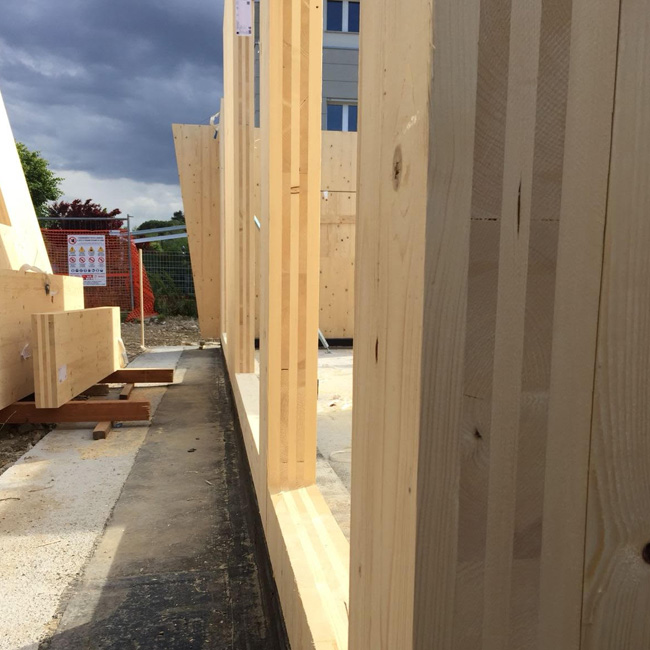
Raw materials extracted from damaged forests from insects or diseases are used for “high value-added use, as long as the mechanical properties of these materials are not compromised” (Mallo & Espinoza, 2014, p. 7430). This underlines the beneficial sides of using “lower-value raw material for a higher-value use, with wood products that continue to benefit the environment long after timber is harvested through carbon sequestration” (Salazar and Meil 2009; Wang et al. 2013). In addition, this technique contributed to a forest management to reduce a number of fire accidents (Salazar and Meil 2009).

As a result of CLT prefabricated house kits are a lower number of contractors, smaller cranes, and minimum to no waste. The CLT manufacturing process of individual pre-cut and assembly to a particular project's dimensions offers a small-scale construction site with a less intensive construction frequency, causing minimum job waste.
Wood is a uniquely renewable resource produced by nature and introduced to people as an ideal construction material. In the current development industry, concrete and steel are the predominant construction materials that showed their detrimental effects on the environment. With wood infrastructure, there is an open window to start positively reflecting on ways of building and occupying commercial and residential spaces.
- References
-
• Mallo, M. F. L., & Espinoza, O. A. (2014). Outlook for cross-laminated timber in the United States. BioResources, 9(4), 7427-7443.
• Roberts, D. (2020, January 15). The hottest new thing in sustainable building is, uh, wood. Vox. https://www.vox.com/energy-and-environment/2020/1/15/21058051/climate-change-building-materials-mass-timber-cross-laminated-clt.
• Van De Kuilen, J. W. G., Ceccotti, A., Xia, Z., & He, M. (2011). Very tall wooden buildings with cross laminated timber. Procedia Engineering, 14, 1621-1628.